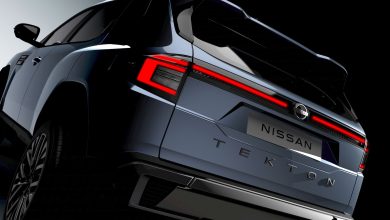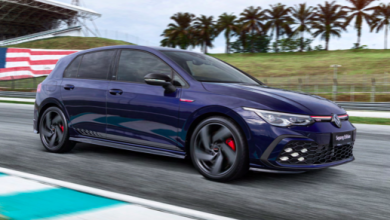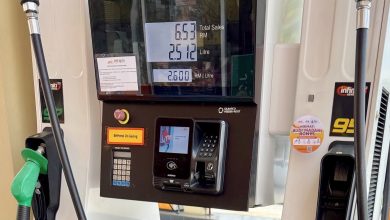Toyota’s Baby Lunar Cruiser Is To Be An FJ40 For The Moon
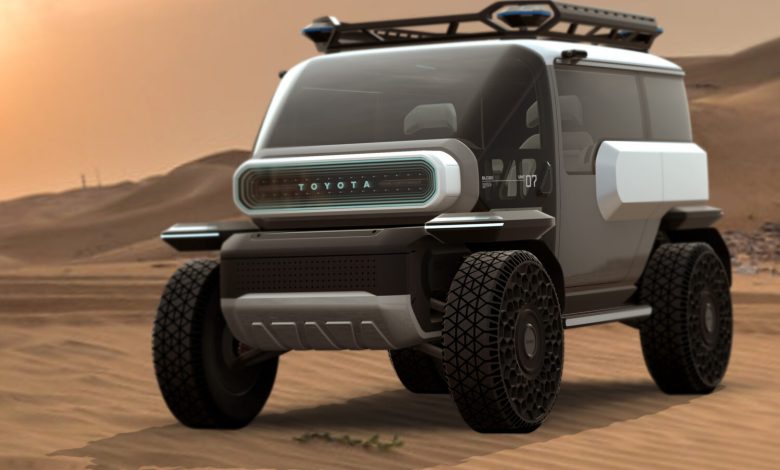
Toyota celebrates 50 years of its American design arm with this daring moon-bound concept.
Toyota’s American design outpost, CALTY Design Research, has recently turned 50. So to celebrate this momentous milestone, the Japanese automaker has decided to go where no Toyota has gone before, and thus was born the Baby Lunar Cruiser (BLC) concept.
As the Lunar in its name implies, this particular concept was designed not for use on Earth, but is intended for more a more moon-centric application instead. Which is just as well then for CALTY to have incorporated some design cues from the original FJ40 Land Cruiser for the BLC, because it is fair to say that the one place man has reached but this legendarily reliable 4×4 hasn’t would be the moon.
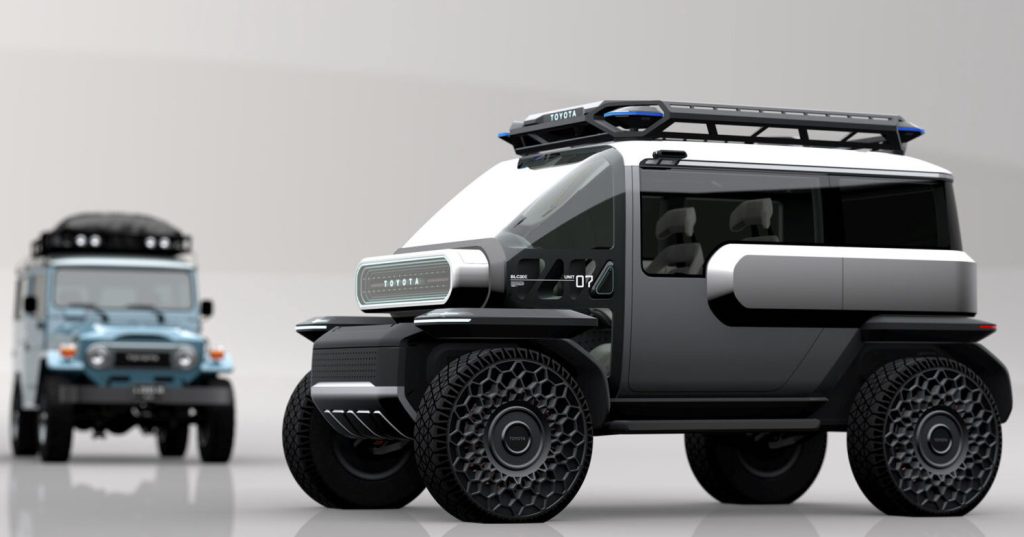
The Land Cruiser’s design influence on the its lunar cruisin’ counterpart is perhaps most clearly seen from its front end, with the BLC featuring the same boxy-bonnet and flat-fendered silhouette as the FJ40. Though this time round the tires of this moon-bound vehicle are of the airless variety, with the wide rectangular grille too featuring an array of cameras and sensors behind the classic Helvetica ‘TOYOTA’ script.
Moving on rearwards meanwhile, hints of the FJ40 can still be discerned from the BLC’s slab-sided side profile. In fact, the BLC even has the Land Cruiser’s traditional split tailgate at the rear too, which is something the latest 300-series has done without already.
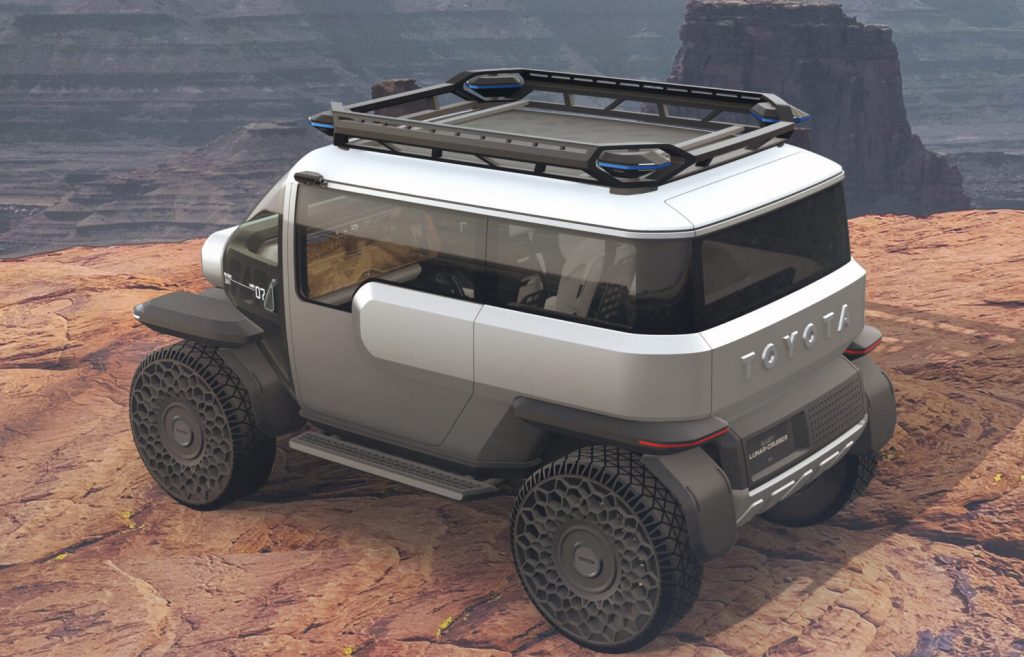
What is nevertheless unique to the BLC however is its propulsion system, which comes courtesy of an electric motor in each wheel. Said motors too are not to be controlled by a conventional steering wheel, but instead by a pair of joysticks in the cabin, or entirely remotely via VR.
And while on the topic of its cabin, the BLC packs within it highly adjustable spaceframe seats and M.O.L.L.E. panels throughout, to supposedly give the interior the flexibility to adapt to any kind of adventure. This moon-bound Toyota also apparently features a panoramic augmented reality dashboard display, though occupants will likely be more amazed at the view outside through the protruding glass canopy instead.
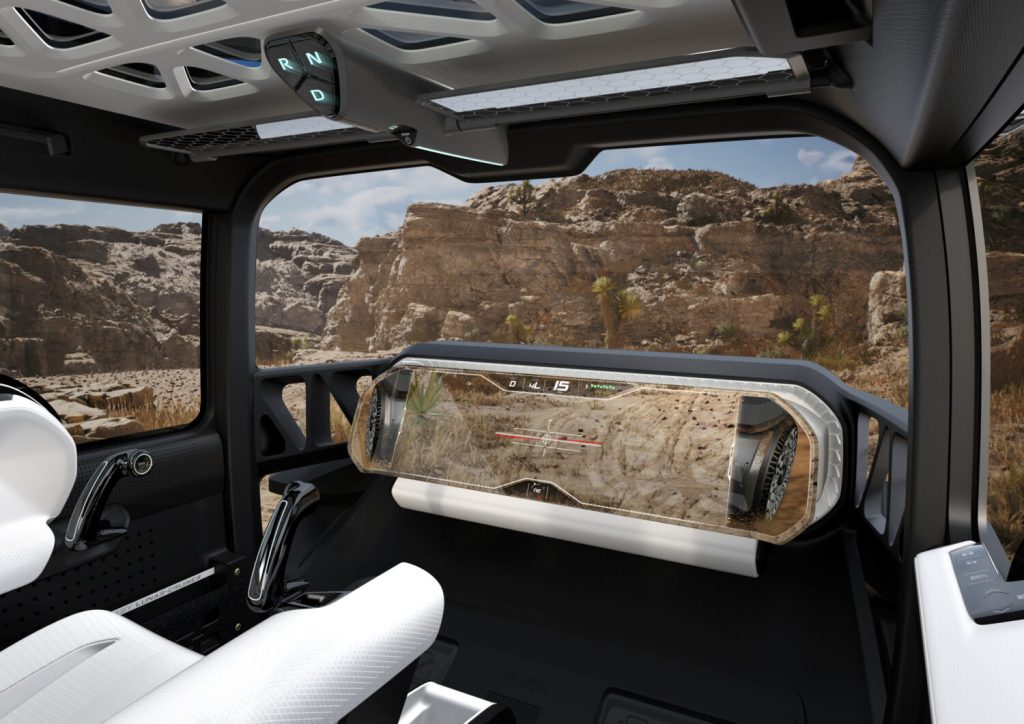
Now of course, the chances of Toyota actually sending the BLC to the moon is about as slim as the chances of a cow jumping over it. It is however worth pointing out that this is in fact not the first time for the Japanese automaker to have lunar aspirations, with the company actually currently cooperating with the Japanese Aerospace Exploration Agency (JAXA) to develop an actual Lunar Cruiser.
It is also worth pointing out too at this point that while the BLC may be the first out-of-this-world project by CALTY, the Californian design arm of Toyota has nevertheless been responsible for some rather cool Toyotas too. The second-generation Celica for instance was one of their designs, as was the 1997 Prius.

CALTY was also partly responsible for two of Toyota’s best looking cars in its current lineup too, with the 2012 Lexus LF-LC and 2014 Toyota FT-1 concepts coming from Californian design house being eventually transformed to the Lexus LC500 and Toyota Supra. Their most recent production designs include the US-spec Land Cruiser and Tacoma pickup truck.
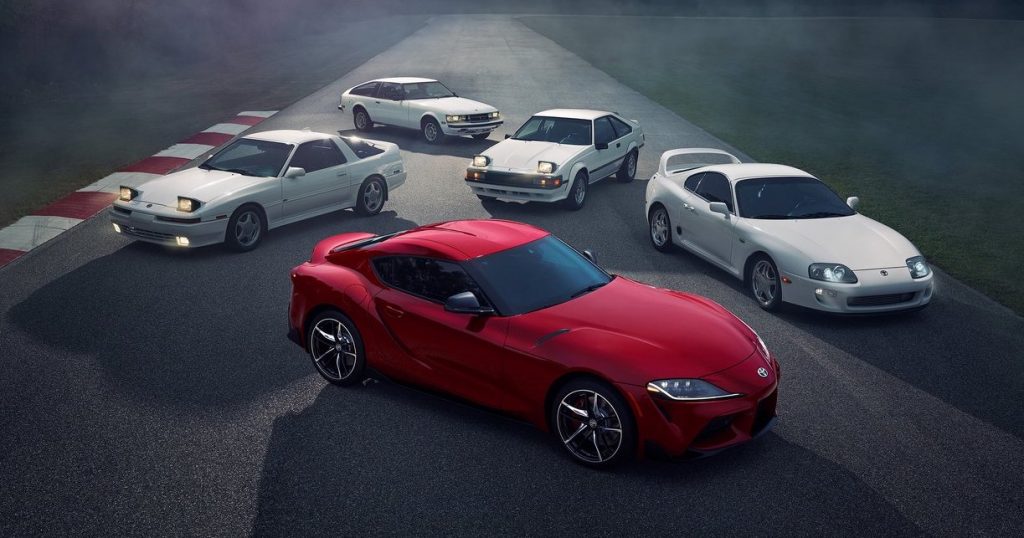
PRESS RELEASE: CALTY Design Research, the American outpost of Toyota’s global design network, is celebrating five decades of groundbreaking design and innovation. The first major automotive design studio on the west coast, CALTY created everything from the 1978 Toyota Celica to the 2024 Toyota Tacoma, and countless concepts and production vehicles in between.
Today marks a glimpse into the future with the surprise reveal of the Toyota Baby Lunar Cruiser (BLC) concept. Built to conquer rugged terrain on Earth and beyond, BLC embodies a unique mix of adaptive technology and heritage design cues from the original FJ40 Land Cruiser.
The BLC is the latest in a long line of thought-provoking concepts dreamed up by the CALTY design team. Some of those concepts – like an early FJ40 proposal and the MX-2 sports car concept – never made it past the walls of the design studio but are being shared for the first time today.
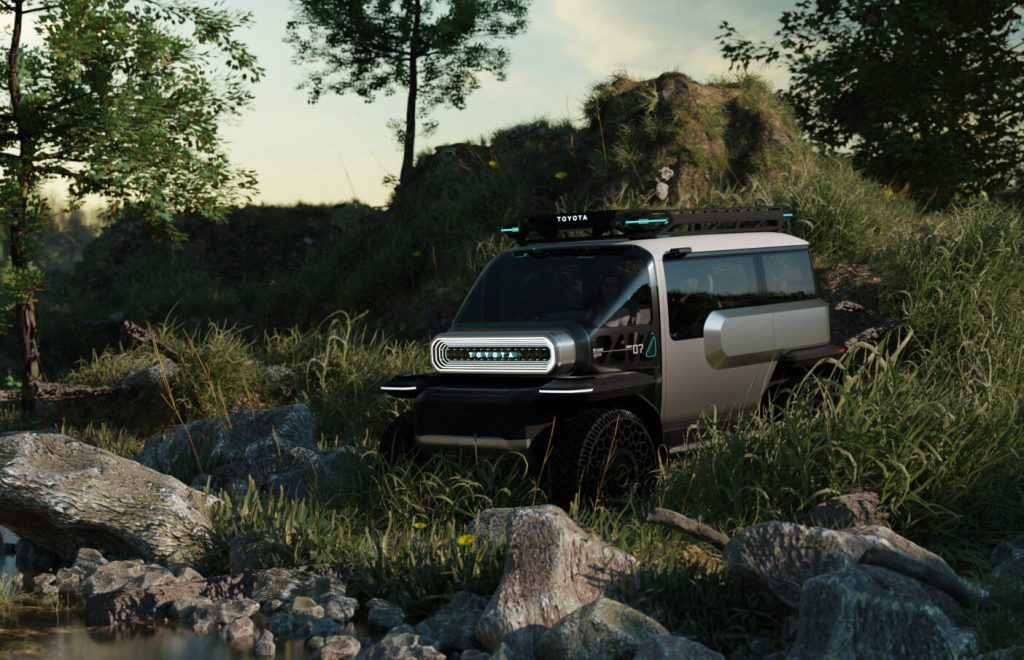
California Dreamin’
Established in 1973 in El Segundo, California, CALTY was the vision of Dr. Shoichiro Toyoda and Eiji Toyoda. The new studio was deliberately kept quiet, allowing it to develop a unique identity and provide fresh, creative inspiration to Toyota’s global design headquarters in Japan.
“California was a youthful, vibrant epicenter of fresh ideas, a cool car culture, and the glamorous movie industry that inspired CALTY to create innovative designs and establish new trends,” said Kevin Hunter, president of CALTY Design Research.
When CALTY decided to expand and relocate, it didn’t go far, moving down the coast to Newport Beach in 1978. That same year, CALTY’s first production car design, the second-generation Celica, became a global hit and the designers haven’t looked back since.
Five Decades of Daring Designs
Throughout the decades, CALTY’s direction and role evolved alongside Toyota’s growth. The 1970s was the decade of discovery and research. The initial years at CALTY under studio chief, Executive Vice President Mamoru Yaegashi were used primarily for conducting research on future trends in design.
One such project was a proposal for an off-road vehicle based on the Land Cruiser. CALTY even went so far as to build a one-fifth scale model that was shown to executives from TMC for review.

CALTY’s designers worked quietly in the shadows during this time, diligently researching the market in and around Southern California. Experimentation was encouraged, so the designers didn’t limit themselves strictly to cars and trucks.
The 1980s introduced the studio’s shift toward exploring innovative design language and techniques. There was plenty of excitement within the design development teams who were given full freedom to push the envelope of artistic process and pure creativity in ways that had not been allowed in major studios at the time.
Naturally, some of the designers turned their thoughts to high performance sports cars, the first of which was the MX-1 in 1983. It featured a mid-engine layout and a scissor-style doors.

A couple years later, a second mid-engine sports car concept was not only designed, but built in house by CALTY out of fiberglass reinforced plastic (FRP). It featured gullwing doors and a swing arm steering wheel that could accommodate either left- or right-hand drive.

During the 1990s, CALTY contributed significantly to Toyota’s production vehicles for the North American market. Notable designs from this era include the 1995 Tacoma, the 1997 Prius and the 2000 Avalon.
It also worked on some designs that didn’t make the final cut, notably the fourth generation Supra, or A80 as it was known internally. CALTY’s intent was to take the Supra in the direction of a “pure sports car,” rather than continue with the previous models’ Grand Touring character. They gave it a long hood and a linear bulge so the engine bay could accommodate a large inline-6 engine.
They also enlarged the functional elements—wheels, engine, rear spoiler, door handles, mirror mount—to heighten the Supra’s already distinct DNA. You can see traces of CALTY’s advanced concept model in TMC’s production version of the fourth-generation car, which was introduced in 1993.
With the growth of production car development in North America, CALTY established a design studio in Ann Arbor, MI in 2004 which revolutionized local production design efforts, resulting in the creation of North American-specific models like the Tundra, Tacoma, Avalon and Sienna.
The 2010s brought an era of fun-to-drive, exciting vehicles, thanks to Toyota CEO Akio Toyoda’s passion and declaration of “no more boring cars.” Highlights from this decade include: The 2012 Fun-Vii concept, deemed a “smart phone on wheels”; the 2012 Lexus LF-LC, which became the 2018 Lexus LC500 and ushered in a new design language for Lexus; and the 2014 FT-1 concept, which became the 2020 Supra, a personal sports car favorite of CALTY.
CALTY still indulged its wild side at this time, however, with concepts like the Scion NYC, which explored future transportation trends in big cities.
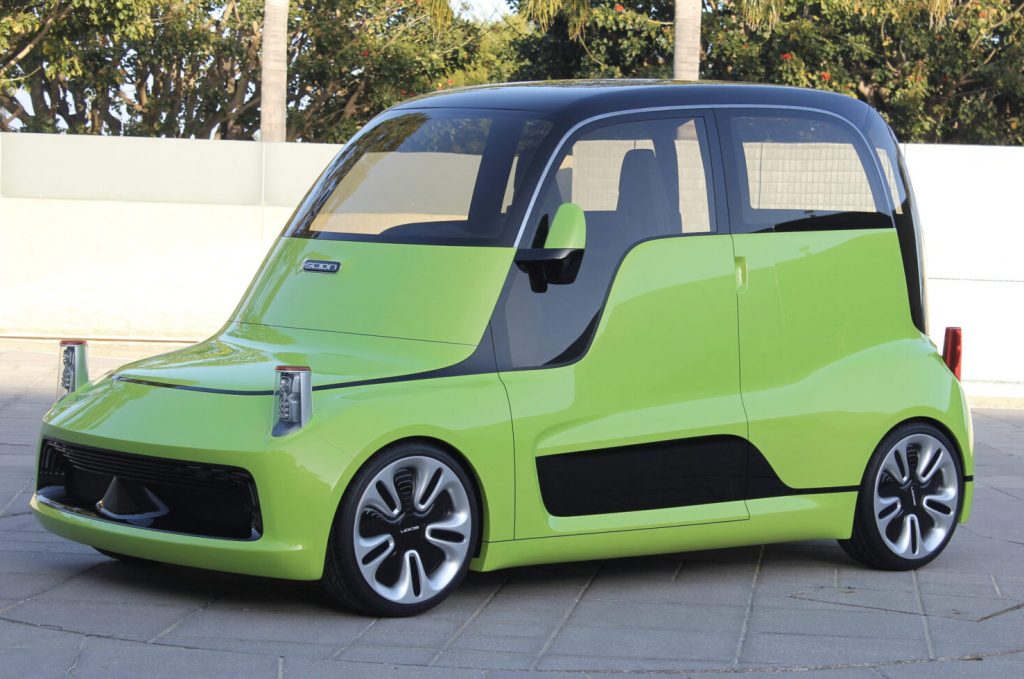
CALTY Newest Concept – The Baby Lunar Cruiser
CALTY is always thinking about what’s next, so it’s no surprise that its latest creation was inspired by a vehicle built to drive on the moon. The Baby Lunar Cruiser (BLC) blends design cues from the original FJ40 Land Cruiser with the futuristic capabilities of an interplanetary exploration vehicle. BLC draws inspiration from the real Lunar Cruiser being developed by the Japanese Aerospace Exploration Agency (JAXA) and Toyota.
Propelled by in-wheel electric motors and controlled by dual joysticks, the BLC’s compact footprint and airless tires give it unparalleled maneuverability. It also boasts exceptional outward visibility thanks to its protruding glass canopy and a panoramic, augmented reality dashboard display. Heritage cues include a “TOYOTA” script grille up front, complete with a full array of cameras and lidar/radar sensors, and a split tailgate configuration in back. Highly adjustable spaceframe seats and M.O.L.L.E. panels throughout give the interior the flexibility to adapt to any kind of adventure.
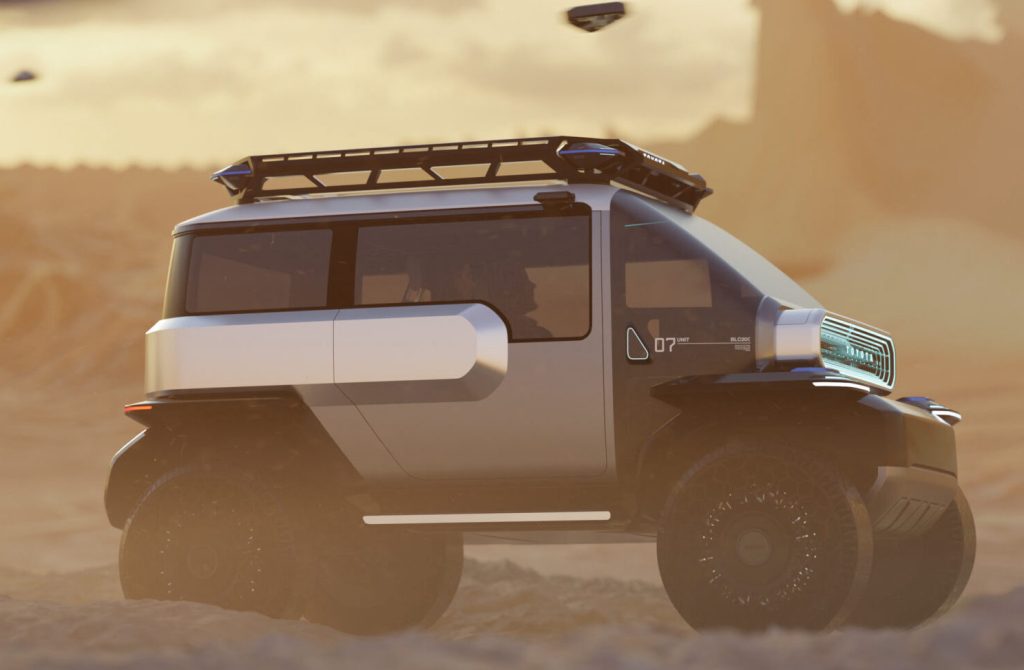
Looking Forward to the Next 50 Years
Today, CALTY is made up of a talented group of exterior and interior designers, CMF (Color, Material, Finish) designers, clay modelers, digital sculptors, visualization specialists, paint specialists, CAD/CAM specialists, a research/planning group, a PR/Multimedia team and administrative group, all working together to create the next big thing in mobility.
“As we continue our journey from the automotive era into the mobility era, there is one thing I feel I can say for sure,” says Simon Humphries, Toyota Motor Corporation Chief Branding Officer and Head of Design. “CALTY will be there at the forefront.”
As the automotive industry shifts toward an electrified future, CALTY will continue to lead the space with innovative vehicles such as the 2021 Lexus Electrified Sport concept. CALTY’s most recent production designs, the highly anticipated 2024 Land Cruiser and the 2024 Tacoma, showcase their commitment to moving forward and embracing new technology while still remaining authentic to the brand’s heritage DNA.
True to their innovative spirit, CALTY’s creative teams are continually exploring new ways to integrate technology and movement into future mobility solutions. From sports cars to trucks to BEVs, CALTY has left an indelible mark on the automotive landscape, showcasing their design prowess and passion for driving excellence.
As CALTY embarks on the next 50 years, Hunter reflects, “There’s no way we could have thrived without Toyota’s support for enabling new ideas. CALTY’s role to explore, innovate, and inspire is ingrained in our DNA, and we are excited to continue pushing boundaries in automotive design.”


